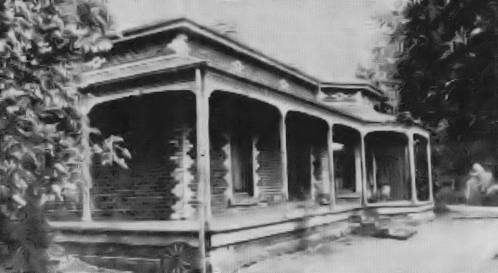
| William Henry Melville |
|
|
William Henry Melville
William
Henry Melville was born at
William
married Minnie Florence Scowcroft at Grange Burn,
Annie
Olive born 30 August 1892
Mary
Pearson born 24 August 1895
Henry
Douglas Gordon born 29 August 1896
Twins
Archibald Peter and William MacDonald born 2 September 1901
All
were born at ‘Braeside’, Hamilton.
In
business, when James Thomson of
William
Melville was well known in
‘For the record, William Henry Melville possibly did
more for
Melville established a law firm in 1889 in
He was a keen sportsman and was
among Hamilton’s leading cricketers, bowlers, tennis players
and golfers
There have been few men of wealth before or after who
donated their time and money to the various sporting
organisations as this generous sportsman.
Melville received great satisfaction and pleasure from
arranging visits to Hamilton of sporting teams of a State and National level,
which enabled the Hamilton
district the
chance of seeing these well-known
performers in action.
His hospitality in entertaining
these teams at his home
“Braeside” became legendary.’

‘Braeside’
as it was in 1976 after it had been made into flats. It was the
home of William Henry Melville where he entertained visiting
sporting celebrities. It was also here that William established
his own private cricket wicket and nets where he would spend
many hours developing his batting technique.
‘Amongst the famous teams that came to
‘Bill Melville had the foresight to realise the district
needed much better sporting facilities if it was to expect
future visits from international teams. There
was no such thing as town planning in those days, and when
Melville began campaigning for ‘breathing space’ within the
borough’s limits he ran up against opposition.
But Melville was a man who did not give in easily. Even
though it cost him a considerable amount of money, he went
ahead with his enterprise, planning ability and imagination,
to convince the people that such a sports ground was needed. The site
he selected had long been an eyesore to Hamiltonians.’
The
site to be developed had become over-run with desirables and
turned into a dumping ground for Indian camps, hawkers and
vagrant cows. Those
elements had followed on from even earlier misuse of the area by
Aboriginals, its use as a goat run and its designation as a
rather poor market square .
‘In 1908 Melville put his plan into operation by forming a
committee to carry out the draining and levelling of the area. In the
following months this land was converted into a picturesque
scene with the only reminder of it once been an ill-conceived
market place, being the name of the boundary street on the
northern side,
Each day when Bill Melville would leave his home ‘Braeside’,
at the east end of
By September 1909, the work was completed. It had cost a
little more than £5000 of which £2000 had been
raised by a loan and the further £3000 from generous
members of the community. This
included the bandstand which still stands there, at a cost of
£280 and the fence and gates £632.
The official opening was to be a red-letter day for
It
would appear that the official opening of the Melville Oval, a
two day carnival, was indeed a momentous occasion not least
because the actual opening event was preceded by an Australian
Rules Football match on the new ground. No
less a team than Victoria Football League side South
On
the day of the official opening William Henry Melville was
acclaimed by a large crowd and by Mr John Thomson MLA who was
standing in for Victoria Premier John Murray. Mr Thomson
declared, ‘The people of
The
Mayor of Hamilton supported those remarks and presented William
with football used in the match against
Good
use was made of the Oval and William Melville’s contacts in
sport encouraged leading sportsmen to visit. William,
himself, was a member of the MCC, which I guess was the
Melbourne Cricket Club and not the English equivalent, and this
resulted in the Melbourne Cricket Club with some of its famous
test players coming to Hamilton. William’s
skill and his captaincy, however, did not prevent his
Some
months after the opening of the Oval the
It would be nice to say that W H Melville spent many a year
playing sport on the reserve he helped turn into a fine sports
ground, but this was not the case. This grand old sportsman
retired from his profession in 1914 and moved to
During
World War 1 William was involved with the YMCA and it was this
involvement which eventually saw him move permanently to live in
William
Henry Melville died on 8 May 1926 in
Byaduk Pioneers with William Henry Melville
seated front right.
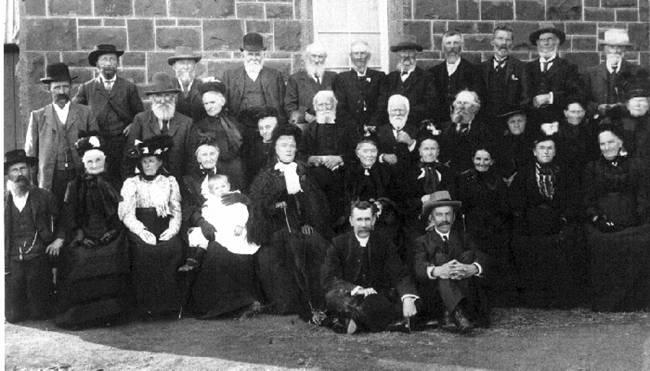
Byaduk Pioneers photographed at Byaduk &
District Pioneers' Day, 27 Mar 1907 Byaduk Methodist Church
(
Picture
above and reference below from the Byaduk Website:
‘W.
H. MELVILLE
William Henry MELVILLE 1859-1926, son of William MELVILLE
1829-1897 "Weerangourt" and Ann McDONALD 1835-1859. Ann
McDONALD, b. 1834 Golspie, Sutherlandshire, Scotland, dau of
John McDONALD and Charlotte FLEMING died in
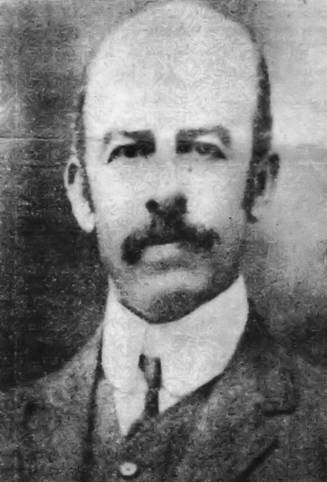
William Henry Melville
‘The best remembered name in
It reads; “In 1903 the MCC bowlers made
Small wonder that State cricketers and
bowlers were keen to accept any invitation from Bill Melville
to play in
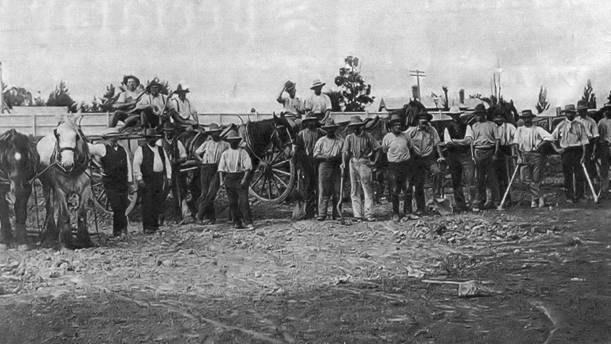

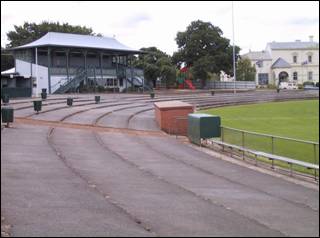
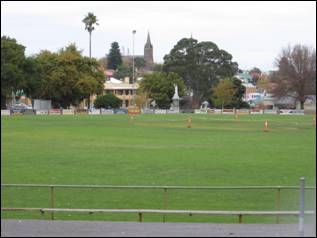
Top picture: Levelling the surface in 1909 for the creation of Melville Oval.
Next picture: The Melville Oval in 1915.
Above: Grandstand and playing surface at Melville Oval, Hamilton.
08/01/2009